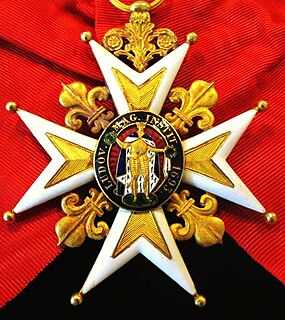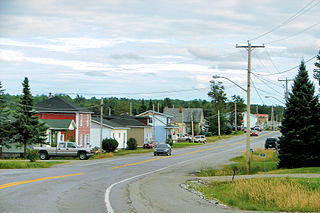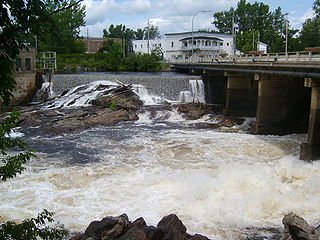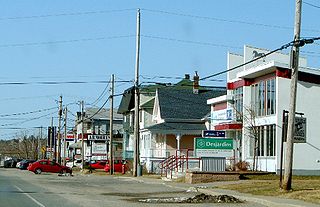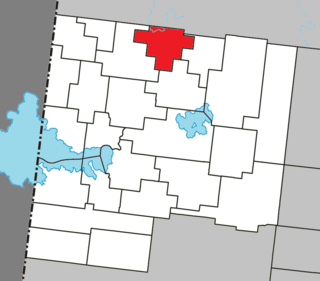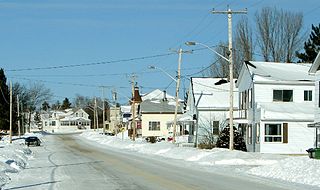Barraute | |
|---|---|
 | |
 Location within Abitibi RCM. | |
| Coordinates: 48°26′N77°38′W / 48.433°N 77.633°W Coordinates: 48°26′N77°38′W / 48.433°N 77.633°W [1] | |
| Country | Canada |
| Province | Quebec |
| Region | Abitibi-Témiscamingue |
| RCM | Abitibi |
| Settled | 1910s |
| Constituted | January 5, 1994 |
| Government | |
| • Mayor | Yvan Roy |
| • Federal riding | Abitibi—Témiscamingue |
| • Prov. riding | Abitibi-Ouest |
| Area | |
| • Total | 504.10 km2 (194.63 sq mi) |
| • Land | 497.97 km2 (192.27 sq mi) |
| Population (2011) [3] | |
| • Total | 1,980 |
| • Density | 4.0/km2 (10/sq mi) |
| • Pop 2006-2011 | |
| • Dwellings | 986 |
| Time zone | UTC−05:00 (EST) |
| • Summer (DST) | UTC−04:00 (EDT) |
| Postal code(s) | |
| Area code(s) | 819 |
| Highways | |
Barraute is a municipality in the Canadian province of Quebec, located in the Abitibi Regional County Municipality.

The provinces and territories of Canada are sub-national governments within the geographical areas of Canada under the authority of the Canadian Constitution. In the 1867 Canadian Confederation, three provinces of British North America—New Brunswick, Nova Scotia, and the Province of Canada —were united to form a federated colony, becoming a sovereign nation in the next century. Over its history, Canada's international borders have changed several times, and the country has grown from the original four provinces to the current ten provinces and three territories. Together, the provinces and territories make up the world's second-largest country by area.

Quebec is one of the thirteen provinces and territories of Canada. It is bordered to the west by the province of Ontario and the bodies of water James Bay and Hudson Bay; to the north by Hudson Strait and Ungava Bay; to the east by the Gulf of Saint Lawrence and the province of Newfoundland and Labrador; and to the south by the province of New Brunswick and the US states of Maine, New Hampshire, Vermont, and New York. It also shares maritime borders with Nunavut, Prince Edward Island, and Nova Scotia. Quebec is Canada's largest province by area and its second-largest administrative division; only the territory of Nunavut is larger. It is historically and politically considered to be part of Central Canada.

Abitibi Regional County Municipality is a regional county municipality in the Abitibi-Témiscamingue region of Quebec. The seat is Amos.
Contents
It is home to the Mont-Vidéo Ski Resort. [4]



